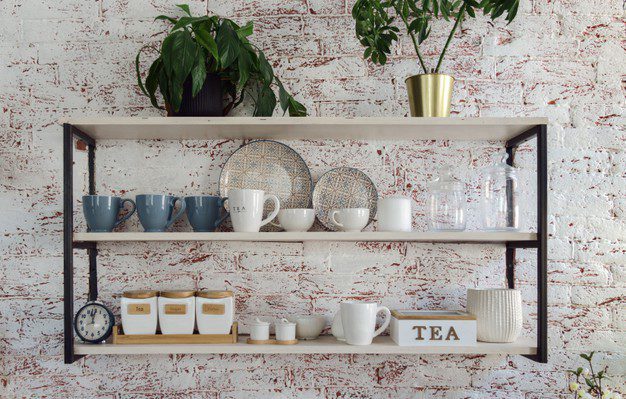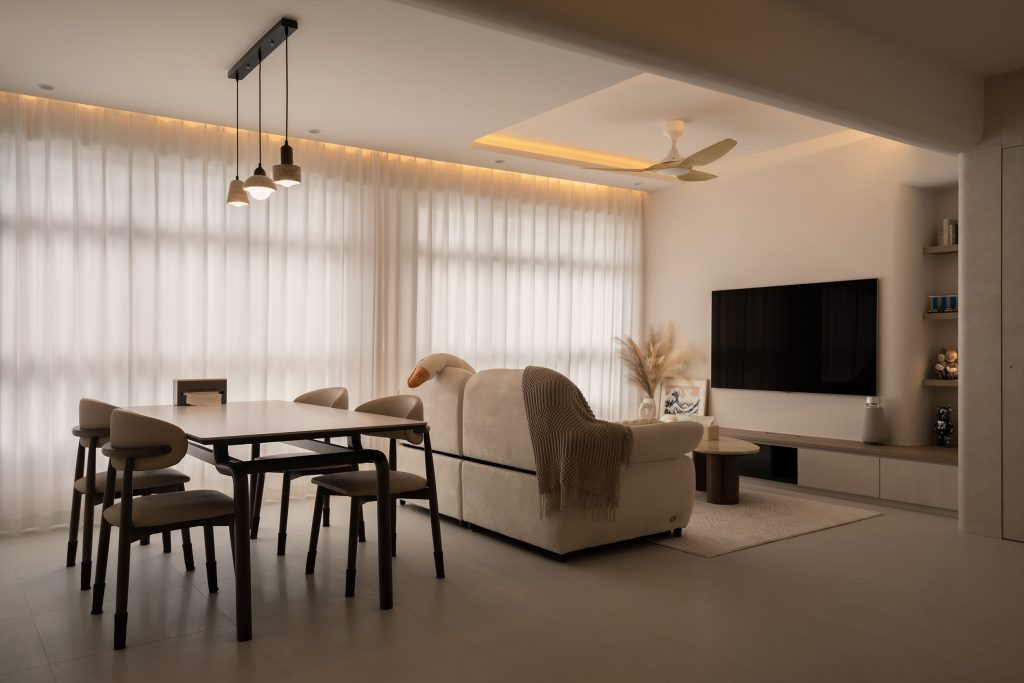In today’s competitive retail landscape, having a well-designed interior space is crucial for attracting customers, enhancing the shopping experience, and driving sales. In this article, we will explore the importance of retail interior design and discuss the latest tips and trends to create a visually appealing and engaging retail environment.
The interior design of a retail store plays a significant role in influencing customer behavior and creating a memorable shopping experience. From the layout and lighting to the color scheme and signage, every element of retail interior design contributes to the overall ambiance and visual appeal of the store. In this fast-paced retail world, where customers have endless choices, retailers need to invest in creating a unique and immersive in-store environment to stand out from the competition.
Importance of Retail Interior Design
Effective retail interior design goes beyond aesthetics; it is about creating a space that reflects the brand identity, aligns with the target audience, and maximizes sales potential. Here are some key reasons why retail interior design is important:
Creating Brand Identity
The interior design of a retail store should convey the brand’s personality, values, and story. It should create a consistent brand experience that resonates with the target audience and builds brand recognition. From the choice of colors and materials to the layout and signage, every design decision should be aligned with the brand’s image and message.
Enhancing Customer Experience
A well-designed retail interior can significantly impact the shopping experience of customers. The layout should be intuitive and easy to navigate, allowing customers to move freely and explore the store. The lighting should create a warm and inviting ambiance, highlighting the products and creating a comfortable shopping environment. The overall design should be customer-centric, making customers feel welcomed and engaged.
Driving Sales
The ultimate goal of any retail store is to drive sales. Retail interior design can play a crucial role in influencing customer behavior and driving purchase decisions. For example, strategic placement of products, effective visual merchandising, and attention to detail in signage can all contribute to increasing sales. A thoughtfully designed retail interior can create a sense of urgency, encourage impulse buying, and entice customers to spend more time and money in the store.
Elements of Retail Interior Design
Retail interior design encompasses various elements that work together to create a cohesive and visually appealing space. Here are some key elements of retail interior design:
Color and Lighting
Color and lighting are fundamental aspects of retail interior design. The choice of colors can evoke emotions, create a mood, and reinforce the brand identity. For example, warm colors like red and orange can create a sense of excitement and urgency, while cool colors like blue and green can create a calm and serene ambiance. Lighting is equally important, as it can highlight products, create focal points, and enhance the overall shopping experience. A combination of ambient, task, and accent lighting should be used strategically to create an inviting and visually appealing environment.
Space Planning
Space planning is the arrangement of various elements within a retail store to optimize the flow of traffic and create a functional and efficient space. The layout should be arranged in a way that guides customers through different sections of the store, allows them to explore and discover products easily, and encourages them to spend more time in the store. It is important to consider factors such as the size of the store, the target audience, and the type of products being sold when planning the space layout.
Visual Merchandising
Visual merchandising is the art of presenting products in an attractive and compelling way to entice customers and drive sales. It involves creating eye-catching displays, arranging products in an organized and visually appealing manner, and using signage and props effectively. Visual merchandising can create a memorable shopping experience, draw customers’ attention to specific products or promotions, and encourage them to make a purchase.

Branding and Signage
Branding and signage are crucial elements of retail interior design as they communicate the brand’s identity, convey important information, and guide customers through the store. The store’s name, logo, and tagline should be prominently displayed, and signage should be clear, informative, and visually appealing. Consistent branding and signage help create a cohesive and memorable brand experience for customers, reinforcing the brand’s image and message.
Technology Integration
In today’s digital age, technology integration has become an important aspect of retail interior design. Retailers are leveraging technology to enhance the in-store experience, engage customers, and streamline operations. This can include interactive displays, digital signage, virtual reality experiences, mobile apps, and more. Technology integration should be done thoughtfully, considering the target audience and the brand image, to create a seamless and immersive shopping experience.
Sustainability and Eco-Friendly Design
With increasing awareness about environmental sustainability, eco-friendly design has become a prominent trend in retail interior design. Retailers are incorporating sustainable materials, energy-efficient lighting, and eco-friendly practices in their store design to reduce their environmental impact and appeal to environmentally conscious customers. Sustainable design not only reflects the brand’s commitment to sustainability but also creates a positive impression on customers who are concerned about the environment.
Latest Trends in Retail Interior Design
Retail interior design is constantly evolving, and staying up-to-date with the latest trends is essential for creating a modern and appealing store environment. Here are some of the latest trends in retail interior design:
In-Store Experience
In today’s era of online shopping, retailers are focusing on creating unique and memorable in-store experiences to attract customers. This can include creating interactive and experiential zones within the store, offering personalized services, hosting events or workshops, and providing in-store entertainment. The goal is to create a destination where customers want to spend time, socialize, and have a memorable experience beyond just shopping.
Interactive Retail
Interactive retail is a growing trend in retail interior design, where technology is used to create interactive and immersive experiences for customers. This can include touchscreens for product customization, virtual reality or augmented reality experiences, and interactive displays that allow customers to try out products virtually. Interactive retail not only engages customers but also provides a unique and memorable shopping experience.
Personalization
Personalization has become a key trend in retail, and it is also reflected in retail interior design. Retailers are focusing on creating personalized spaces within the store that cater to specific customer preferences or needs. This can include creating personalized fitting rooms, product displays based on customer data or preferences, and offering customization options for products. Personalization adds a sense of exclusivity and uniqueness to the store experience, making customers feel special and valued.
Biophilic Design
Biophilic design is an emerging trend in retail interior design that focuses on incorporating natural elements and principles into the store environment. This can include using natural materials like wood and stone, incorporating live plants or green walls, and maximizing natural light. Biophilic design has been proven to have a positive impact on customer well-being, reducing stress, improving mood, and increasing overall satisfaction with the store environment.
Flexible Store Layouts
Flexible store layouts are becoming popular in retail interior design, as they allow retailers to easily adapt their store space to changing needs and trends. This can include modular fixtures and displays that can be easily rearranged, movable walls or partitions that can create different zones or areas within the store, and flexible lighting or signage that can be updated as needed. Flexible store layouts provide versatility and adaptability, allowing retailers to create a dynamic and ever-changing store environment.
Minimalism and Simplicity
Minimalism and simplicity are design trends that have gained traction in retail interior design in recent years. Clean lines, simple color palettes, and minimalistic displays can create a sense of calm and sophistication in the store environment. Retailers are opting for a less cluttered and more streamlined approach to store design, focusing on showcasing the products in a minimalistic and aesthetically pleasing manner.
Mix of Old and New
Another emerging trend in retail interior design is the mix of old and new elements. Retailers are combining vintage or traditional design elements with modern and contemporary elements to create a unique and eclectic store environment. This can include using antique or vintage furniture, fixtures, or decor pieces, along with sleek and modern displays or lighting. The mix of old and new creates a visually interesting and memorable store environment that stands out from the crowd.
Inclusivity and Accessibility
Inclusivity and accessibility are important considerations in retail interior design. Retailers are focusing on creating store environments that are inclusive and accessible to all customers, regardless of their age, ability, or background. This can include providing wheelchair-accessible entrances and exits, offering seating areas for customers with disabilities, providing clear signage and wayfinding for visually impaired customers, and designing displays and fixtures at varying heights for different customer heights. Inclusivity and accessibility in retail interior design ensure that all customers feel welcome and can easily navigate the store environment.
Localization and Regional Influences
Retailers are increasingly incorporating localization and regional influences in their store design to create a sense of connection with the local community. This can include using locally sourced materials, incorporating local art or cultural elements in the store decor, or designing the store layout based on the regional preferences and shopping habits of the target audience. Localization and regional influences add a sense of authenticity and relevance to the store environment, resonating with the local customers and creating a unique shopping experience.
Conclusion
Retail interior design plays a crucial role in creating an attractive, functional, and engaging store environment that can drive sales and enhance the overall shopping experience for customers. By considering factors such as space layout, visual merchandising, branding and signage, technology integration, sustainability, and the latest trends, retailers can create a store environment that stands out and appeals to today’s discerning customers.
In conclusion, “SHEinterior” brings a wealth of expertise in retail interior design, commercial interior design, offering tailored solutions for branding and signage, retail store renovation, retail interior design ideas and delivering innovative and trend-setting designs. Their team of experienced designers understands the unique requirements of retail spaces and works closely with clients to create store environments that optimize sales, customer engagement, and brand representation. By hiring “SHEinterior” for their specialized retail interior design services, you can trust that your retail space will be designed to maximize its potential, create a positive customer experience, and reflect your brand’s identity effectively. Partner with “SHEinterior” for exceptional retail interior design solutions that drive results and elevate your brand’s presence in the retail industry.
retail store renovation, retail interior design ideas, commercial interior design



